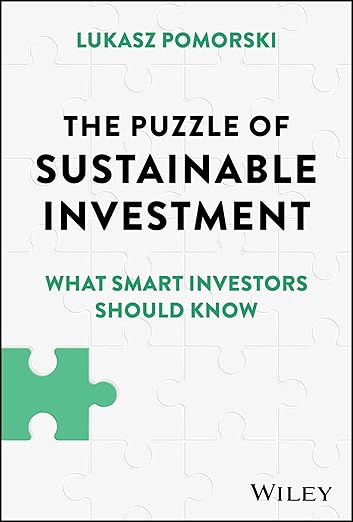The Active Management Delusion: Respect the Wisdom of the Crowd
“My basic point here is that neither the Financial Analysts as a whole nor the investment funds as a whole can expect to ‘beat the market,’ because in a significant sense they (or you) are the market . . . the greater the overall influence of Financial Analysts on investment and speculative decisions the less becomes the mathematical possibility of the overall results being better than the market’s.” — Benjamin Graham An enduring principle of financial history is that past solutions often plant the seeds of future problems. Among the least-expected examples of this phenomena were the passage of the Securities Act of 1933 and the Securities Exchange Act of 1934. These acts mandated extensive financial disclosures by publicly traded companies and outlawed market manipulation and insider trading. Prior to their passage, Wall Street stock operators routinely profited by cheating markets rather than outsmarting them. To be clear, these regulations were desperately needed to clean up US securities markets. After they were passed, skillful securities analysis, rather than market manipulation and insider trading, was largely the only way to beat the market. Of course, truly above-the-mean securities analysis was and remains exceedingly rare. But that hasn’t kept capital from flooding into actively managed mutual funds — even after the first index funds launched in the 1970s. Under pressure to differentiate their products, fund managers introduced a slew of investment strategies covering various asset classes and sub-asset classes. Increased complexity, specialization, and robust marketing budgets convinced the public that professional managers could add value to their investment portfolios beyond what they could otherwise obtain by investing in a diversified portfolio of stocks. Few paid attention when the SEC noted that the average professionally managed portfolio underperformed broad indexes before fees in an exhaustive 1940 study. For more than 80 years, the fact that few active managers add value has been validated by numerous research papers published by government agencies, including the SEC, and such Nobel laureates as William Sharpe and Eugene Fama, as well as the experience of Warren Buffett, David Swensen, Charles Ellis, and other highly regarded practitioners. Despite a preponderance of evidence, many investors continue to reject the undeniable truth that very few are capable of consistently outperforming an inexpensive index fund. Outside a small and shrinking group of extraordinarily talented investors, active management is a waste of money and time. The Extraordinary Wisdom of the Crowd So, why is the active management delusion so persistent? One theory is that it stems from a general lack of understanding as to why active strategies are doomed to failure in most cases. The primary reason — but certainly not the only one — is summed up by the “wisdom of crowds,” a mathematical concept Francis Galton first introduced in 1907. Galton described how hundreds of people at a livestock fair tried to guess the weight of an ox. The average of the 787 submissions was 1,198 pounds, which missed the ox’s actual weight by only 9 pounds, and was more accurate than 90% of the individual guesses. So, 9 out of 10 participants underperformed the market. Galton’s contest was not an anomaly. The wisdom of crowds demonstrates that creating a better-than-average estimate of an uncertain value becomes more difficult as the number of estimates increases. This applies to weight-guessing contests, GDP growth forecasts, asset class return assumptions, stock price estimates, etc. If participants have access to the same information, the total estimates above the actual amount tend to cancel out those below it, and the average comes remarkably close to the real number. The results of a contest at Riverdale High School in Portland, Oregon, illustrated below, demonstrate this principle. Participants tried to guess the number of jellybeans in a jar. Their average guess was 1,180, which wasn’t far from the actual total of 1,283. But out of 71 guesses, only 3 students (fewer than 5%) beat the average. Anders Nielsen came closest with 1,296. Average Participant Guess by Number of Participants The Seed of the Active Management Delusion Speculators prior to 1934 understood the wisdom of crowds intuitively, which is one reason why they relied so heavily on insider trading and market manipulation. Even in the late 1800s, market efficiency was a formidable obstacle to outperformance. The famed stock operator Daniel Drew captured this sentiment when he reportedly commented, “To speckilate [sic] in Wall Street when you are no longer an insider, is like buying cows by candlelight.” The Great Depression-era securities acts improved market integrity in the United States, but they also sowed the seed of the active management delusion. As companies were forced to release troves of financial information that few could interpret, markets became temporarily inefficient. Those like Benjamin Graham who understood how to sift through and apply this new data had a competitive advantage. But as more investment professionals emulated Graham’s methods and more trained financial analysts brought their skills to bear, the market became more efficient and the potential for outperformance more remote. In fact, Graham accelerated this process by publishing his techniques and strategies and thus weakened his competitive advantage. His book Security Analysis even became a bestseller. After a time, Graham concluded that beating the market was no longer a viable goal for the vast majority of financial analysts. That did not mean that he had lost faith in their value; he just knew with mathematical certainty that outperformance was too tall an order for most. Despite his indisputable logic, his warning was largely ignored. By the 1960s, too many investment firms and investment professionals had staked their businesses and livelihoods on beating the market. Letting Go of the Fear of Obsolescence The flawed belief that we can beat the market persists to this day. What’s worse, it has spread to institutional consulting and other sectors. Many firms base their entire value proposition on their manager selection skills and asset allocation strategies. Yet these are subject to the same constraints as Galton’s weight-guessing contest. For example, average estimates of asset class return
The Active Management Delusion: Respect the Wisdom of the Crowd Read More »













